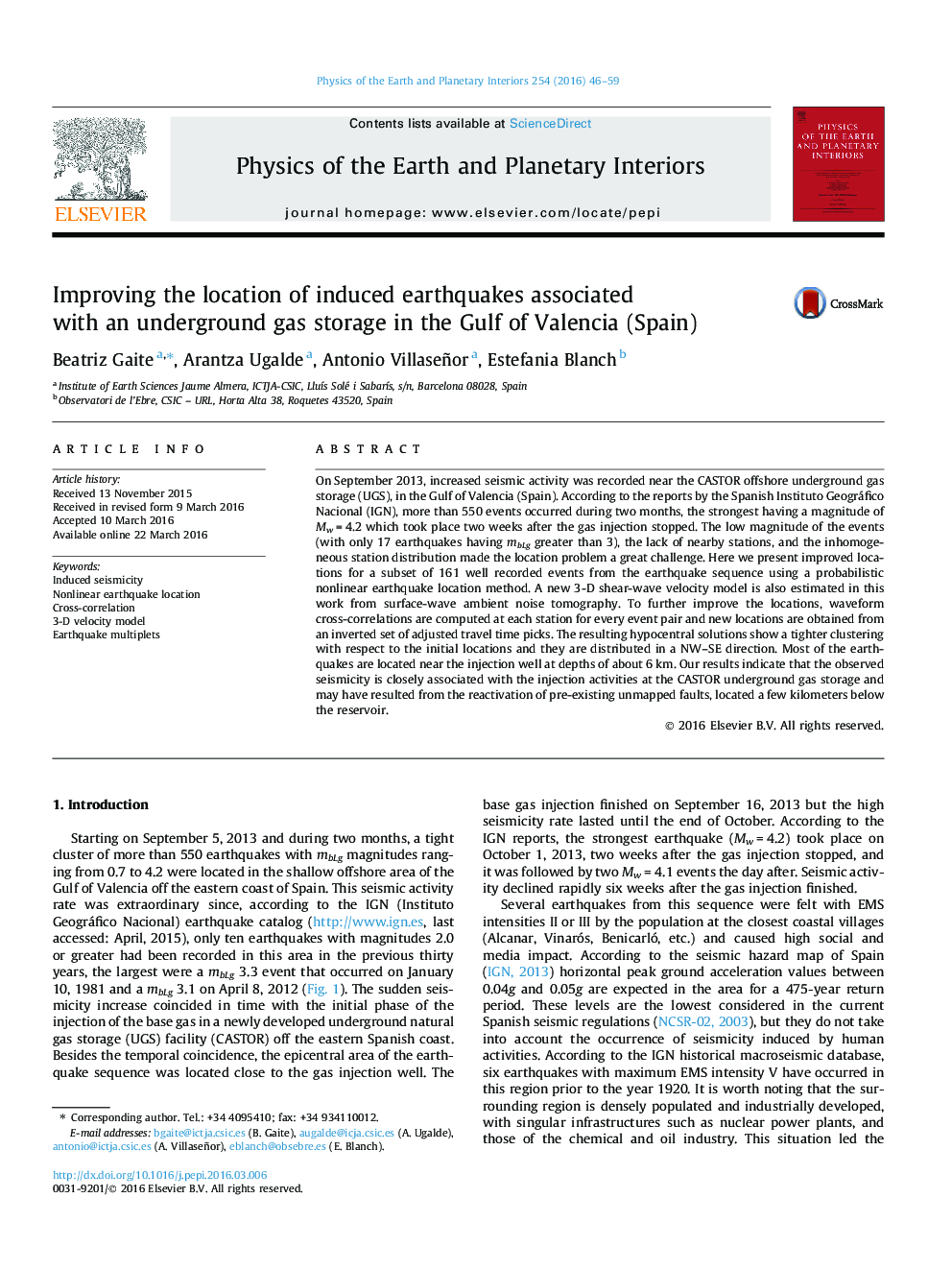| Article ID | Journal | Published Year | Pages | File Type |
|---|---|---|---|---|
| 4741360 | Physics of the Earth and Planetary Interiors | 2016 | 14 Pages |
•A 3-D crustal velocity model for Western Mediterranean is obtained.•Some similar events occurred during and after the gas injection.•The relocated seismic sequence is distributed in a NW–SE direction.•Most of the events are located around 6 km depth.
On September 2013, increased seismic activity was recorded near the CASTOR offshore underground gas storage (UGS), in the Gulf of Valencia (Spain). According to the reports by the Spanish Instituto Geográfico Nacional (IGN), more than 550 events occurred during two months, the strongest having a magnitude of Mw = 4.2 which took place two weeks after the gas injection stopped. The low magnitude of the events (with only 17 earthquakes having mbLg greater than 3), the lack of nearby stations, and the inhomogeneous station distribution made the location problem a great challenge. Here we present improved locations for a subset of 161 well recorded events from the earthquake sequence using a probabilistic nonlinear earthquake location method. A new 3-D shear-wave velocity model is also estimated in this work from surface-wave ambient noise tomography. To further improve the locations, waveform cross-correlations are computed at each station for every event pair and new locations are obtained from an inverted set of adjusted travel time picks. The resulting hypocentral solutions show a tighter clustering with respect to the initial locations and they are distributed in a NW–SE direction. Most of the earthquakes are located near the injection well at depths of about 6 km. Our results indicate that the observed seismicity is closely associated with the injection activities at the CASTOR underground gas storage and may have resulted from the reactivation of pre-existing unmapped faults, located a few kilometers below the reservoir.
